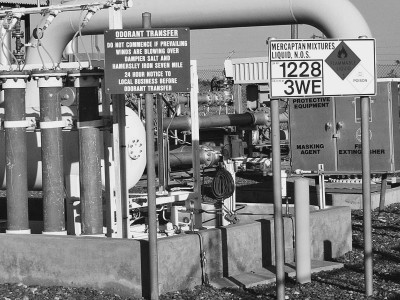Ukraine and Russia have been negotiating the gas deal since April 2014 after Russia increased the gas price from USD 268.5 to USD 485 for 1000 cubic meters. The parties could not reach the deal because Russia insisted on Ukraine paying its debts for gas consumed in 2013 and for the gas consumed in the second quarter of 2014 at the new price while Ukraine disagreed with the price and with the price-setting mechanism (i.e. a USD 100 export tariff discount not as a change in contract). Ukraine wanted to change the formula for the price of gas and to be independent of the whims of the Russian government. From May till June the parties held nine rounds of negotiations which proved to be unsuccessful. Talks intensified later as Russia completely stopped gas flows on June 16, 2014. The Naftogaz filed a complaint to the Stockholm Arbitrage court requesting a change in the gas contract with the Gasprom. With winter approaching the parties resumed the negotiations with the European Union serving as an intermediary.
On the last day of October 2014, Ukraine signed an agreement with Russia under intermediation of the EU on gas supplies, which hopefully ended the longest in the history of Ukraine-Russia relations confrontation on natural gas supplies. The parties signed three documents:
-
the binding intergovernmental protocol on the conditions of Russian gas supplies from November 2014 till March 31, 2015 signed by the Minister of Energy of Russia Aleksander Novak, the Minister of Energy of Ukraine Yuriy Prodan and the European Commissioner for Energy in the European Commission Gunter Oettinger. The Protocol sets basic conditions for restructuring the gas debt of Ukraine and for resuming the gas supplies starting November 2014. By the end of 2014, Ukraine agreed to pay USD 3.1 bn of debt for the gas consumed in November-December 2013 and the first quarter of 2014. The payment will be done in two tranches. The first tranche of USD 1.45 bn was paid by the Naftogaz on November 5.
-
a technical amendment #33 to the gas contract of January 19, 2009 between the Gasprom and the Naftogaz signed by Aleksander Miller and Andriy Kobolev, which describes the details of daily supplies.
-
and a letter by Jose Manuel Barroso, the President of the European Commission, to Petro Poroshenko, the President of Ukraine. The letter gives guarantees on behalf of the European Union to help Ukraine financially in case Russia does not follow its obligation on the gas price as well as the readiness of the European Commission to facilitate reverse gas flows from the EU countries to Ukraine.
According to the reached agreement the Naftogaz will be able to buy gas from the Gasprom at a price of USD 378 per 1000 cubic meters on the condition of advance payments and without the “take or pay” clause. The Naftogaz expects to buy 4 bcm of gas this year which will cost around USD 1.52 bn. Besides, it might purchase 4 bcm of gas thanks to reverse supplies from the EU. Will that amount of gas be enough for the winter?
In winter 2013/141, Ukraine’s gas consumption was 29.8 bcm of gas. Gas imports in winter of 2013/14 were 20 bcm and gas extraction was 8.9 bcm, and the rest of consumption was covered by the gas in storages accumulated in previous months. According to estimates2, in case of no gas imports from Russia, no reduction in gas consumption, full usage of Hungarian and Polish routes and 50% usage of the Slovakian route3 Ukraine will run out of gas by the end of January 2015. With additional 4 bcm of gas purchased from all suppliers in 2014 Ukraine will run out of gas by the beginning of March. The current consumption trend for the first week of November (when the heating season started) shows that Ukraine decreased consumption of gas by around 10%. If this trend continues, Ukraine might have enough gas for the winter even without additional purchases from Russia in 2015.
Ukraine reserved USD 3.1 bn for paying off the gas debt and was given permission by the IMF to use international reserves for gas payments. Rough estimates show that Ukraine will need USD 2-2.5 bn to pay for 4 bcm of gas from Russia and for the current level of gas supplies from Hungary, Poland and Slovakia (taking into account Russia’s payments for gas transit). The National Bank reserves are sufficient to cover this amount even if the combined third and fourth tranches from IMF are delayed.
Therefore, the signed deal on gas supplies from Russia allows Ukraine to be fairly optimistic about its energy future: Ukraine will have enough gas to last it for the winter and enough money to pay for it.
1 November through March
2 Georg Zachman “Can Ukraine secure enough gas for the winter? A scenario analysis”, GAG, August 2014. TN/05/2014
3 From October 2014 to February 2015, 35% of the capacity of the Slovakian route is sold as “interruptible”, while 65% is sold as “firm”.




